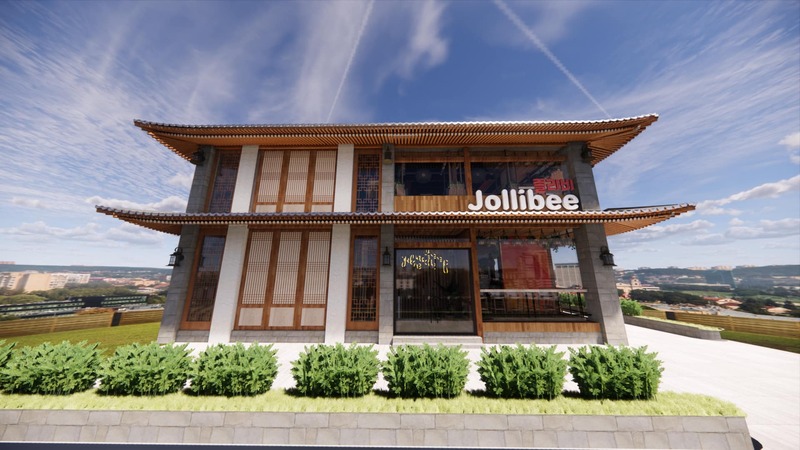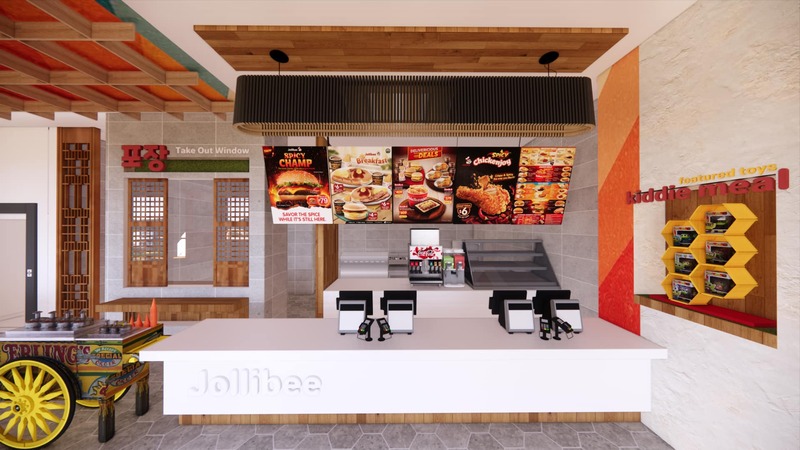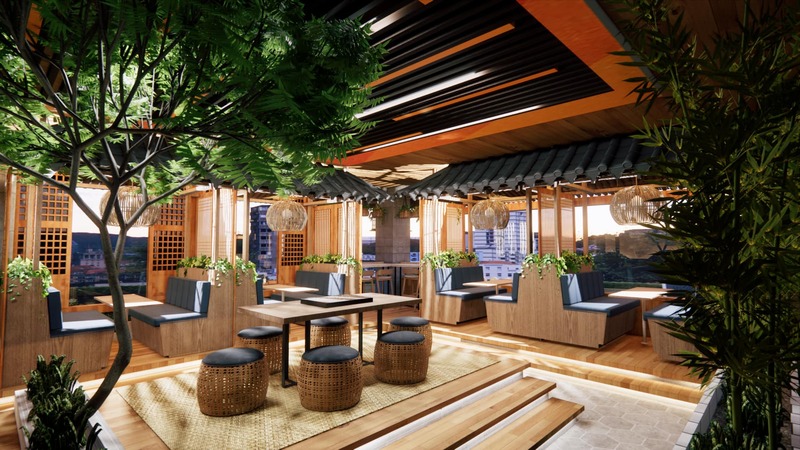- 한국어
- English
- 日本語
- 中文
- العربية
- Español
- Français
- Deutsch
- Pусский
- Tiếng Việt
- Indonesian
By Honorary Reporter Ricci Lynne De Leon from Philippines
Photos = Ygima Bay and Mikaela Kate Kong
Ygima Bay and Mikaela Kate Kong, two architecture majors at the University of Santo Tomas in Manila, the Philippines, have designed a design concept influenced by Korea's Hanok (traditional architecture) for a branch of their country's most famous fast-food chain, Jollibee.

This Jollibee branch with Korean style architecture is a design concept of two architecture majors at the University of Santo Tomas.
Though Jollibee has no branch in Korea, these two students designed their own branch for their architectural project featuring Korean design. The exterior and interior were inspired by traditional Korean architecture with a touch of Philippine culture.
In a May 31 email interview, Bay said she and her partner sought to merge the rich culture and history of the two countries, introduce Jollibee to Koreans and promote tourism in both nations. As a fan of Hallyu and Korean barbecue, she said she was inspired by Korean culture and history and thought it would be interesting to merge the cultures and traditions of both countries.

The interior sports many traditional architectural facets of Korea.
As a K-drama fan, she said she was inspired by "Weightlifting Fairy Kim Bok-joo" to choose Jollibee as the subject for the project since the protagonist’s father operates a popular chicken joint.
"At the time, I came across how Jollibee and how people of all ages love chicken. With this idea, we researched Korean dining culture and discovered that they're also deeply in love with fried chicken.”
Bay and Kong designed the fictional branch's interior and exterior using traditional Korean architecture, having dealt with Korean architecture when they were sophomores. Bay said she found it interesting that both countries differ in style and tradition though they are in Asia.

The Hanok-influenced Jollibee branch sports an open courtyard in the middle.
"One consideration was the architecture of a traditional Hanok village, its structure and how it works," Bay said. "We implemented the design on the second floor to mimic a Hanok with an open courtyard in the middle. We also incorporated a traditional Korean roof above the booth seats to further improve the idea. In addition, Hanji windows are seen in the interior and exterior."
"Through this theoretical design of a branch of the fast-food chain, we believe that a portal leading to discoveries shall be slowly opened. Furthermore, this portal will become a melting pot for new knowledge and limitless creativity in acknowledging differences in Asian culture like those of Korea and Philippines."
enny0611@korea.kr
*This article is written by a Korea.net Honorary Reporter. Our group of Honorary Reporters are from all around the world, and they share with Korea.net their love and passion for all things Korean.